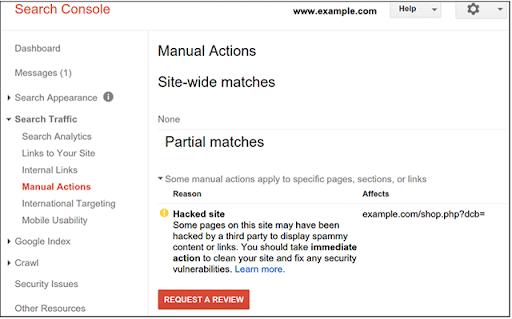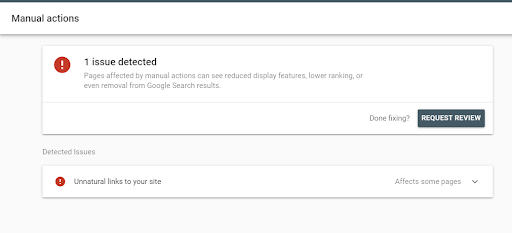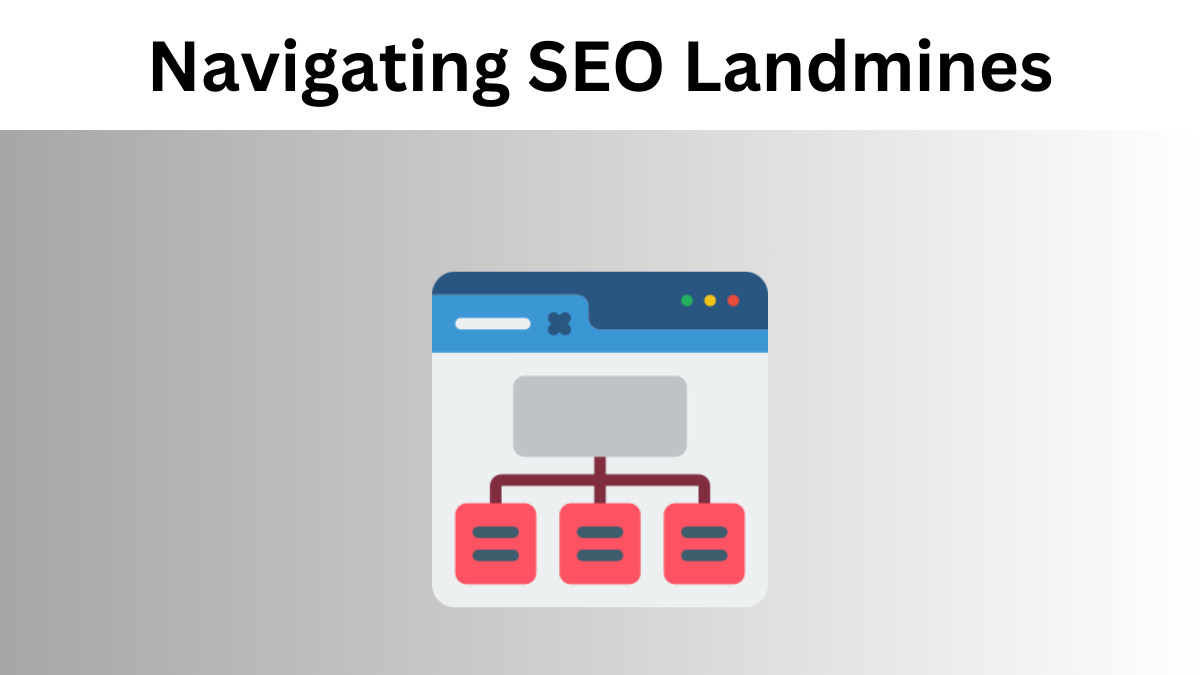Dipped your toes into SEO and got stung by Google penalties? You’re not alone. These common pitfalls can tank your site’s ranking overnight.
In this guide, we’ll debunk myths about Google penalties and equip you with recovery and prevention strategies. Whether it’s an algorithm hiccup or a manual action, we’ve got tips to get your site back on track.
Understanding the Basics of Google Penalties
Google penalties, a crucial aspect of SEO, can negatively affect your website’s ranking and visibility if you’re not careful.
These penalties aren’t random acts of revenge by the internet giant but rather a response to sites that violate Google Search Essentials (formerly Webmaster Guidelines). If you’re guilty of over-optimization, keyword stuffing, or using deceptive redirects, you’re risking a penalty.
There are two types: algorithmic and manual. The first is automatic, triggered by Google’s ever-evolving algorithms. The latter is a manual slap-down from a human reviewer at Google. Both can send your site spiraling down the rankings.
But don’t despair, you can recover from penalties by adhering to Google’s guidelines and making necessary changes to your site.
Unpacking the Different Types of Google Penalties
It’s important to grasp the distinction between algorithmic and manual penalties, as well as the causes of each type. This will help you avoid them and maintain your website’s visibility.
Let’s break down these penalties and understand what triggers them.
Algorithmic Vs. Manual Penalties
Algorithmic penalties occur when Google’s automated systems detect unnatural activity. This could be due to:
- Over-optimization of keywords
- Backlinks from low-quality sources
- Duplicate content across multiple pages
On the other hand, manual penalties involve a human reviewer at Google finding that your site doesn’t comply with their guidelines. You’ll receive a notification in your Google Search Console if this happens, allowing you to take immediate action.
Understanding the root cause is the first step to manual or algorithmic penalty recovery. Stay informed, and you’ll navigate the SEO landscape with confidence.
Decoding the Causes of Google Penalties
Let’s take a deeper dive into some of the causes of Google penalties:
Sneaky Redirects
When a website sends a user to a different URL than the one they initially requested, this confuses users and often leads them to spam sites. To avoid this penalty, ensure users are directed to the correct pages and that no suspicious redirects occur on your site.
Keyword Stuffing and Hidden Text
In the past, people tried to trick search engines by stuffing their website with irrelevant keywords or hiding text. This doesn’t work any more. Today, it’s important to use keywords appropriately and ensure all your text is visible and useful to readers to avoid penalties.
Cloaked Images
Cloaking images means hiding images or presenting different images to website visitors and search engines. This trick is to deceive search engines or gain an unfair ranking advantage. Ensure all your images are appropriately visible and relevant to avoid this penalty.
Link Schemes and Spam
Creating unnatural or spammy links or participating in link schemes can lead to penalties. To maintain a good standing, it’s better to focus on obtaining high-quality, organic links and regularly check your website for any low-quality or unnatural links.
Low Quality Content
Having thin or low-quality content on your site can also lead to penalties. Content should always provide value to users. Regularly updating and improving content can help maintain your site’s quality.
Expired Information
Expired information, like outdated job postings, could lead to penalties too. Ensure you regularly update and remove any outdated information from your site.
Hacking Issues
If your site’s security is compromised or if your site has been hacked, Google may remove it from search results to protect users. Always keep your site’s security up-to-date and monitor for any potential threats.
Finding Out What Type of Google Penalty is Affecting Your Site

Knowing the type of Google penalty impacting your website is key to fixing the problem. Here’s how you can identify it:
1. Look at Google Search Console and Google Analytics
Google Search Console is like a health check-up for your website on Google Search. If your site has fallen in rankings due to a manual penalty, you’ll get a message here. The message will tell you about the penalty and what steps you can take to fix it.
2. Check what you’ve been up to lately
Review your recent SEO activities to see if they could have led to a drop in your site’s ranking. For example, if you started using a new way of getting links to your site and those links are not high quality, that could be the problem. Changes in your website’s layout or low-quality content could also be to blame.
3. See if there’s been an algorithm change
If you didn’t get a manual action notice, and you haven’t changed anything on your site, your drop in ranking could be due to a change in Google’s algorithm. You can check a website like Moz, which keeps track of all Google’s algorithm changes, to see if an update matches up with when your site’s ranking started to drop.
You can use tools like SEMRush’s Sensor tool to help you see if there’s been a big shake-up in Google’s overall indexing system.
Figuring out the type of Google penalty is your first step towards getting your website back on track. Also, remember that sometimes a drop in ranking could be because more high-profile websites have started competing with you for the same keywords.
Bouncing Back from an Algorithm-Related Google Penalty
Recovering from an algorithm-related Google penalty might be tricky, but it’s doable. Here’s a step-by-step guide to get you back on track.
- Research New Algorithm Changes: Google updates its algorithms regularly to offer more accurate search results. As mentioned earlier, when your website gets hit with a penalty, check if Google has made any new changes.Understanding these alterations can give you insights into why your site received a penalty.
- Evaluate Your Backlink Profile: Backlinks are essential for site ranking, but harmful ones can cause penalties. Regularly review your website’s backlink profile to ensure all incoming links are from reputable, high-quality sources.
- Remove Problematic Links Promptly: You can request the website owner to take down the link, or you can use Google’s disavow tool to ignore the harmful link during the ranking process.
- Pay Close Attention to Your Content and Keyword Strategy: Make sure your website offers high-quality, relevant content with an appropriate density of keywords. Keyword stuffing or thin content can lead to a drop in rankings.
- Review Your Site’s Technical Structure: Make sure your website is easy to navigate, has a sitemap, and is mobile-friendly. Technical aspects like page load speed and site security are also crucial for maintaining your site’s ranking.
Recovering from a Manual Google Penalty

If Google has sent you a notification of a manual action against your site, follow these specific steps. You should be able to resolve the problem and get your website back on track. Once you fix the issue, your site should regain its ranking when Google refreshes its index.
Step 1: Find Out Why You Were Penalized
Google is very straightforward about its reasons for penalizing a website. If you receive a penalty message, it will likely come with a detailed report about the problem and which web pages are affected. Make sure to click the “learn more” link, where Google provides helpful information to resolve the issue.
Step 2: Address the Issue
Google’s report makes this easy because it identifies specific issues and provides steps for resolution. For instance, you may have to remove hidden text from your pages or disavow backlinks from suspicious sources. Ensure you correct all affected pages.
Step 3: Request a Review
Once you’ve fixed the issue, you can ask Google to review your site again using Google Search Console. When requesting the review, you will have the opportunity to write directly to a Google representative. Explain in as much detail as possible what corrections you have made. Ensure that you’ve completely resolved the issue before submitting the appeal.
Estimating the Recovery Time After a Google Penalty
The time it takes to recover from a Google penalty can be different for everyone. It depends on how big the problem was and what you did to fix it.
Keep in mind that recovering won’t happen overnight. A minor infraction might take a few weeks to recover from if you act swiftly and correct the problem. For more severe penalties, the recovery period could extend to several months as you work to rebuild your site’s credibility.
The most significant factor in recovery time is your proactive engagement in resolving the issue and ensuring it doesn’t happen again.
Exploring Penalties on Bing: A Comparative Study
Penalties on Bing also exist and can affect your site’s visibility just like Google penalties, even though people don’t talk about them as much. Bing penalizes for tactics like keyword stuffing and link schemes, but it also has its own unique rules.
To illustrate, let’s compare Google and Bing penalties:
| Feature | Bing | |
| Algorithm updates | More frequent | Less frequent |
| Clear penalty notifications | Yes | No clear penalty notifications |
| Broad core updates | Yes | Uses a different system |
| Manual penalties are common | Yes | Manual penalties are rare |
While the processes differ, the end goal is the same: rewarding high-quality, user-focused content. So, focus on delivering that and you’ll navigate the SEO landscape with ease, regardless of the search engine.
Tips for Preventing Future SEO Penalties
Here are key strategies to implement and prevent future SEO penalties:
- Mindful keyword usage: Don’t stuff your content with keywords. Google’s algorithm can detect it, and you may be penalized.
- Quality link building: Shady link building strategies, such as buying links, can lead to penalties. Instead, focus on earning links from authoritative sites.
- Regular content updates: Google rewards fresh, relevant content. Regularly updating your site can help avoid penalties.
- Avoiding duplicate content: Duplicate content can harm your SEO efforts. Ensure that each page on your site has unique and valuable content.
- Complying with Google’s guidelines: Following Google’s guidelines is crucial to avoid penalties. Stay updated on best practices and ensure your website meets the requirements.
- Regular website audits: Conduct regular audits to identify and fix any issues that may lead to penalties. This includes checking for broken links, outdated content, and other SEO-related issues.
- Staying updated on SEO trends: SEO is constantly evolving. Stay informed about the latest trends and updates to adapt your strategies accordingly.
Conclusion
You’ve now navigated the tricky terrain of Google penalties. You’ve learned why they happen, how to recover, and how to avoid them in the future.
Everyone stumbles, but with understanding and patience, you can get your site back on track. Just remember to keep your SEO practices clean, stay updated with Google’s guidelines, and never stop learning.

